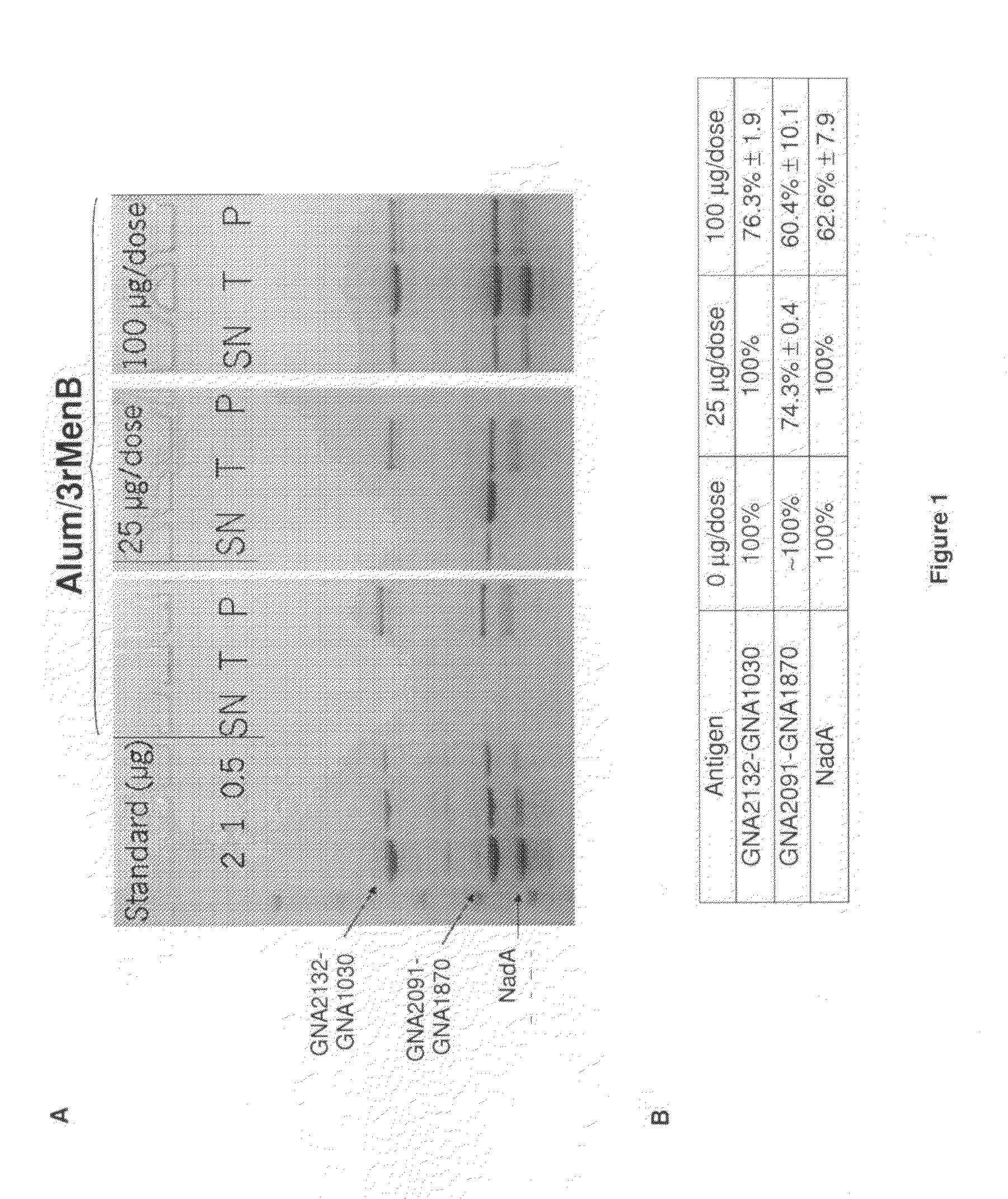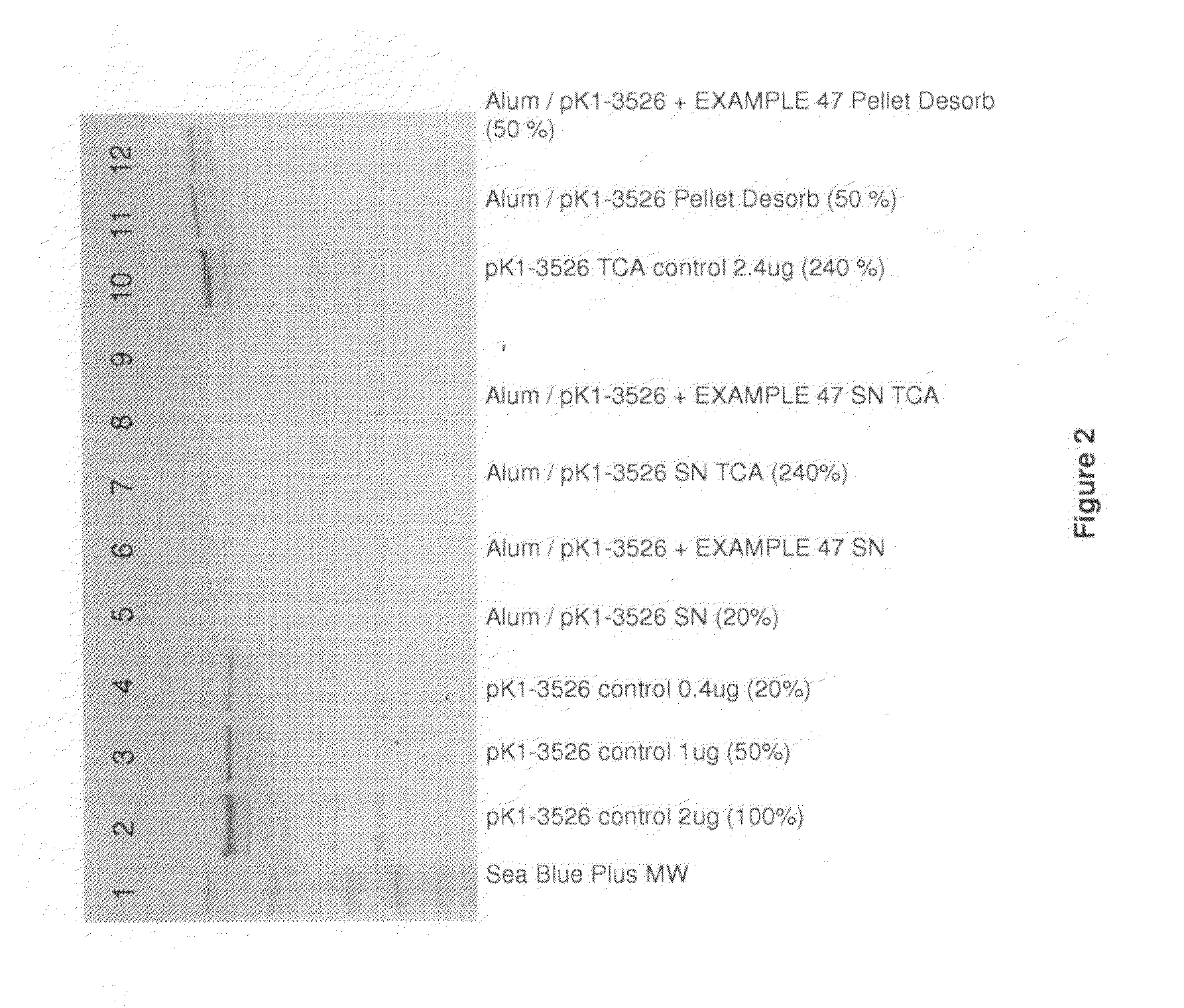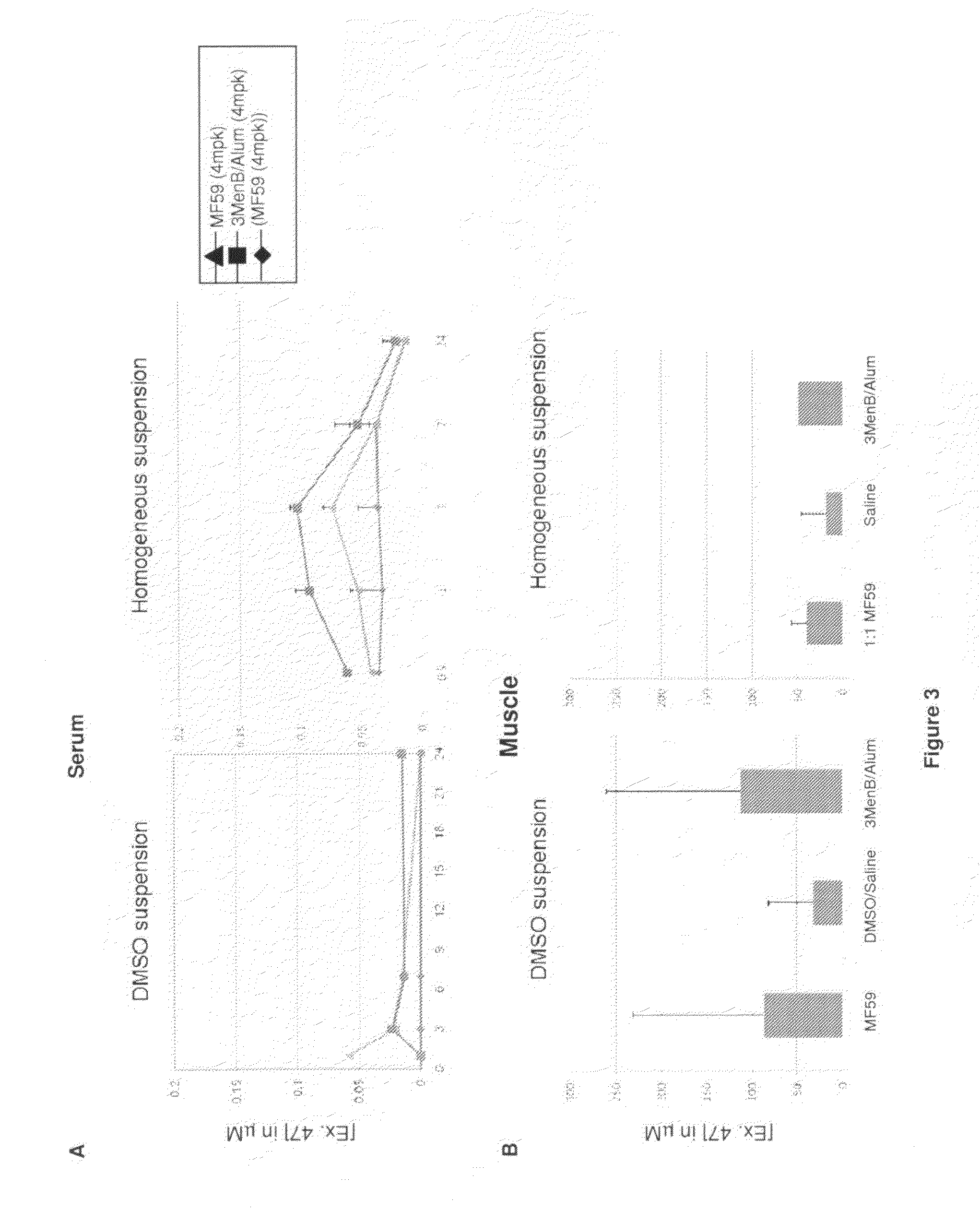Homogenous suspension of immunopotentiating compounds and uses thereof
a technology of immunopotentiating compounds and homogenous suspension, which is applied in the direction of immunological disorders, antibacterial agents, antibody medical ingredients, etc., can solve the problems of limited immunogenicity as compared to whole pathogens, and achieve the effect of enhancing the effectiveness of the induced immune respons
- Summary
- Abstract
- Description
- Claims
- Application Information
AI Technical Summary
Benefits of technology
Problems solved by technology
Method used
Image
Examples
example 1
Benzo[f][1,7]naphthyridin-5-amine
[0378]
[0379]A solution of 2-(tert-butoxycarbonylamino)phenylboronic acid (1.0 eq.) and 3-bromopicolino-nitrile (1.0 eq.) in toluene (0.44 M) was mixed with tetrakis(triphenyl-phosphine)palladium (5 mol %) and 2N aqueous potassium carbonate solution (2.0 eq.). The reaction was heated to 100° C. and stirred overnight. After cooling to ambient temperature, the reaction content was diluted with 2% methanol in dichloromethane and water. The two phases were separated, and the aqueous layer was extracted twice with 2% methanol in dichloromethane. The combined organic layers were washed with brine, dried over anhydrous MgSO4, and concentrated en vacuo. The crude material was purified by flash chromatography on a COMBIFLASH® system (ISCO) using 0-80% ethyl acetate in hexane to give a white solid. 1H NMR (acetone d-6): δ 9.04 (d, 1H), 8.91 (d, 1H), 8.45 (d, 1H), 7.86 (dd, 1H), 7.53-7.62 (m, 2H), 7.35 (t, 1H), 6.65 (br, 2H). LRMS [M+H]=196.1
example 3
9-chlorobenzo[f][1,7]naphthyridin-5-amine
[0380]
Step 1: tert-butyl 2-bromo-4-chlorophenylcarbamate
[0381]To a solution of 2-bromo-4-chloroaniline (1.0 eq.) in tetrahydrofuran (0.2 M) at 0° C. under N2 atmosphere was added dropwise 1M NaHMDS (2.5 eq.). The reaction was stirred for 15 minutes at 0° C., and a solution of di-tert-butyl dicarbonate in tetrahydrofuran was added. The reaction was warmed to room temperature overnight. The solvent was evaporated, and the resulting residue was quenched with 0.1N HCl aqueous solution. The aqueous suspension was extracted twice with ethyl acetate. The combined organic layers were washed with brine, dried over anhydrous MgSO4, and concentrated en vacuo. The crude material was purified y by flash chromatography on a COMBIFLASH® system (ISCO) using 0-5% ethyl acetate in hexane to give the product as light yellow oil.
Step 2: tert-butyl 4-chloro-2-(4,4,5,5-tetramethyl-1,3,2-dioxaborolan-2-yl)phenyl-carbamate
[0382]Tert-butyl 2-bromo-4-chlorophenylcarba...
example 4
8-chlorobenzo[f][1,7]naphthyridin-5-amine
[0384]
Step 1: tert-butyl 2-bromo-5-chlorophenylcarbamate
[0385]To a solution of 2-bromo-5-chloroaniline (1.0 eq.) in tetrahydrofuran (0.2 M) at 0° C. under N2 atmosphere was added dropwise 1M NaHMDS (2.5 eq.). The reaction was stirred for 15 minutes at 0° C., and a solution of di-tert-butyl dicarbonate in tetrahydrofuran was added. The reaction was warmed to room temperature overnight. The solvent was evaporated, and the resulting residue was quenched with 0.1N HCl aqueous solution. The aqueous suspension was extracted twice with ethyl acetate. The combined organic layers were washed with brine, dried over anhydrous MgSO4, and concentrated en vacuo. The crude material was purified by flash chromatography on a COMBIFLASH® system (ISCO) using 0-5% ethyl acetate in hexane to give the product as light yellow oil.
Step 2: tert-butyl 5-chloro-2-(4,4,5,5-tetramethyl-1,3,2-dioxaborolan-2-yl)phenyl-carbamate
[0386]Tert-butyl 2-bromo-5-chlorophenylcarbama...
PUM
| Property | Measurement | Unit |
|---|---|---|
| diameter | aaaaa | aaaaa |
| pressure | aaaaa | aaaaa |
| pressure | aaaaa | aaaaa |
Abstract
Description
Claims
Application Information
 Login to View More
Login to View More - R&D
- Intellectual Property
- Life Sciences
- Materials
- Tech Scout
- Unparalleled Data Quality
- Higher Quality Content
- 60% Fewer Hallucinations
Browse by: Latest US Patents, China's latest patents, Technical Efficacy Thesaurus, Application Domain, Technology Topic, Popular Technical Reports.
© 2025 PatSnap. All rights reserved.Legal|Privacy policy|Modern Slavery Act Transparency Statement|Sitemap|About US| Contact US: help@patsnap.com



